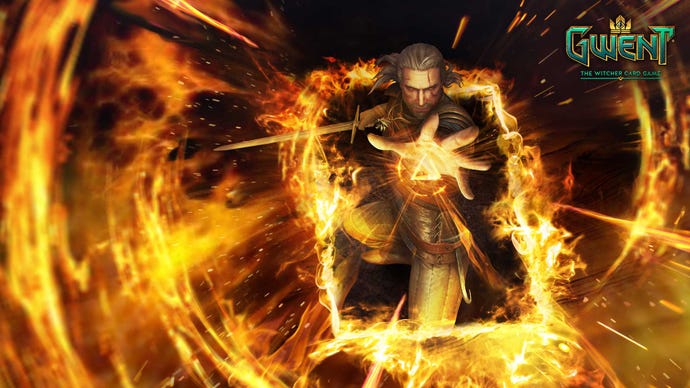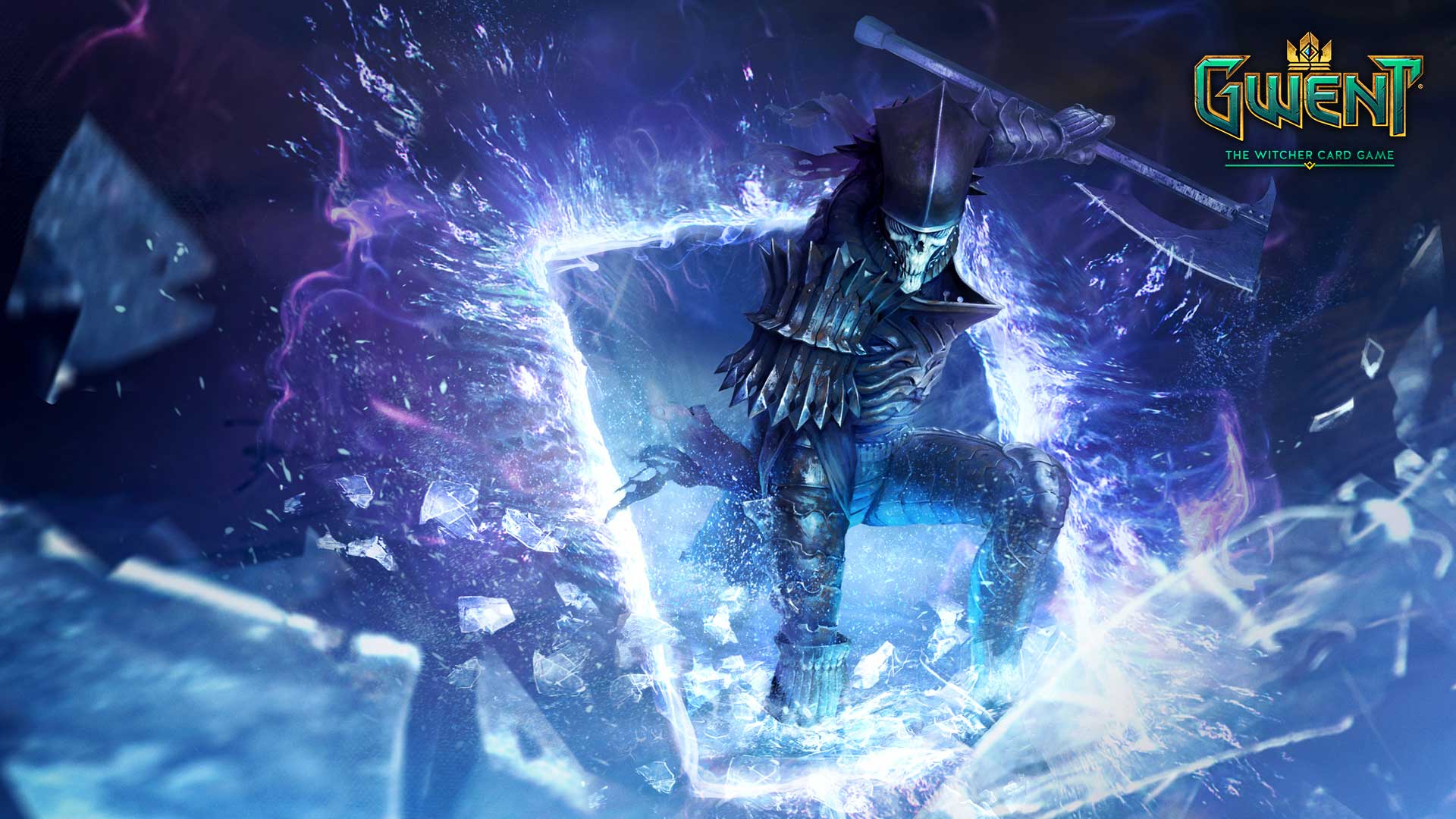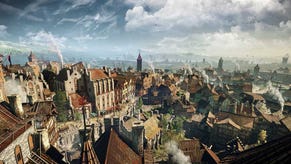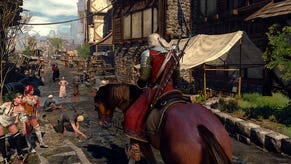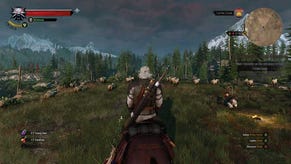Gwent: The Witcher Card Game guide - how to get new cards, level up and build decks without spending all your money
Gwent: The Witcher Card Game is in a whole different ballgame to the single-player puzzles in The Witcher 3. Let's get started.
Gwent: The Witcher Card Game is based on the mini-game from The Witcher 3, and if you enjoyed that, you're probably thinking you're going to kick Gwent's ass in the standalone version, right?
Wrong. Or at least not necessarily. Gwent: The Witcher Card Game carries over many mechanics from the popular Velen pastime, but it's different enough that those of you who are new to digital collectible card games (CCGs, TCGs) may run head-first into a wall.
Now that Gwent: The Witcher Card Game is in open beta, it's a good time to revisit the differences and talk about to succeed in the free-to-play card battler.
There are two main differences between Gwent: The Witcher Card Game and the game that appeared in The Witcher 3:
- A) You're playing against real people and they're a lot smarter than AI.
Those clever tricks you used to fool the AI into wasting all its good cards? The killer combinations the NPCs of Velen didn't know enough to Scorch as you set them up? No good here. Everyone you meet with a lick of experience knows what you're trying to do, and if they have a better deck, they will own you. - B) You don't get a card every time you win a match, and you can't buy cards from innkeepers.
This is the killer. You start with an absolutely shitty collection of cards, and it takes a long time to get more. You can buy card boosters, which are called kegs, but they offer a random assortment of cards (plus your choice of one card from a pool of five better-than-average options) and take a long time to earn with in-game currency.
Now that you've moderated your expectations, it's time to talk about how to move past the problems and start enjoying the game. A) is a matter of practice and studying the meta, but B) is something we can help you with right off the bat, because it's not impossible to build a good Gwent: The Witcher Card Game deck without spending a metric s**t ton of money.
Step One: pick a starting faction and stick to it
Gwent: The Witcher Card Game gives you a better chance of getting the cards you want with a little twist on booster pack RNG, so make the most of it by picking one faction and sticking with it rather than trying to acquire every card immediately.
Why? Well, whether you choose to set yourself a spend limit and buy kegs, or follow the free milling process we'll talk about in the next section, you'll only have a limited amount of resources to work with. You want to spend them wisely - especially right at the beginning, when you're unlikely to be winning many matches, thereby slowing your card acquisition.
Choosing your first Gwent: The Witcher Card Game faction isn't easy, because the meta shifts all the time - all factions have all had their moments in the sun over the months of beta as players discovered, exploited and then countered cunning tactics, and now the very different Nilfgaard has turned up to shake things. It also varies from rank to rank, so that decks perfectly tailored to counter high-level players may not work as effectively at lower ends of the ladder, believe it or not.
That said, GwentDB allows you to sort user-submitted Gwent: The Witcher Card Game decks by player rating, and anything with a very high ranking and a recent date is probably pretty good - and although you won't take any experienced players by surprise with it, it will be deadly to the legion of befuddled noobs you'll find flailing about. (Unless they found this article too, in which case: sorry, everyone.)
Since you're just starting Gwent: The Witcher Card Game, look for a deck with detailed instructions on how to play each combo - although be aware that it will all make a lot more sense once you start playing for yourself, even if the creator hasn't offered guidance.
Later on you can build your very own custom decks, but you'll want to know what you're doing first. That's why you're here, right?
Step two: start building your deck
It's unlikely you have many of the cards your deck build calls for in your starting pack, even if you purchased a couple of kegs. So how do we get more without spending heaps of money or grinding for ages to get more random boosters?
The answer is: milling cards down for scraps, then crafting better replacements.
Milling is performed from the card collection screen, and destroys a card in return for a small amount of scraps - the resource used in crafting. You might be tempted to mill down every card you're not using for your current deck to get a stack of scraps, but it's not a great idea; when the meta shifts or you graduate to higher-level play you'll probably want a new deck, and if you've destroyed everything from that faction, you'll be a long way behind.
So confine yourself to milling duplicates: you can't place more than three of any kind of card in a deck, and you can equip those same three cards in any number of decks, so ditch any spares immediately. There are many cards with a limit of one per deck, so recycle even doubles on those.
Crafting is the best way to get new cards if you don't want to keep spending money. It's slow, but it's also certain - you choose the card you want, and spend the resources to get it. This is also performed on the card collection screen.
Think carefully about your crafting choices. Even if you did mill every spare card from your starter deck and kegs, you still won't be able to afford all the cards you want. In general, you should focus on the basics first, grabbing the cheaper cards you can play in combos rather than the big rare ones, so you have some reasonable cards before you finish building your deck - but keep an eye out for those really powerful cards that act all on their own without requiring other cards you haven't yet obtained, because they can change everything.
And when your build resources run out with a deck halfway done? Take a deep breath, gather your courage, and dive into play.
Step three: grind
Late last year CD Projekt RED introduced a great change to Gwent: The Witcher Card Game, which made free-to-play and limited-spend much more viable. In the current build, you'll earn a little bit of XP and a few resources - scraps and ore - for every round of match, even if you lose.
The better you do in a match, the more XP you'll receive (again, even if you lose), and of course if you win you get a much nicer stack of resources than for a loss - but it all adds up, even when you're seriously outclassed. As you gain XP you'll receive level up rewards which are much weightier than general match rewards.
Spend a few hours in the field and you'll begin to amass enough ore to purchase kegs, as well as scraps to craft new cards - both as rewards and for milling down duplicates from your new kegs. As long as you've got a specific build in mind, and you're already practicing with as much of it as you can muster, both your skills and your arsenal will grow as you grind.
You're looking at tens of hours, at least, to get a really good deck here - depending on your spend and win rate. But the point is: it can be done, and you will win matches along the way, and you will get better and better ... as long as you keep your eyes on the end goal.
Step four: git gud (sorry)
If you're a CCG veteran (or natural) you'll only need to choose a deck and dive right in; practice will make perfect. For everybody else, the community has produced some fantastic resources for those looking to improve their Gwent: The Witcher Card Game skills.
If you're looking for a site to take you from woe to go, Gwentify has a series of beginner articles. It also boasts a card picker, drawing on community ratings, to help you decide which card to accept from the pool available in a keg, and a nice simple deck builder.
Nobody can magically make you play better, but The Gwentlemen's Club is a terrific blog delving into nitty-gritties, and has been regularly updated with new articles as the meta shifted over the past few months. As well as deck guides and meta analysis, it offers a couple of in-depth guides to advanced and intermediate tactics; this one about Move Advantage is a really nice, straightforward explanation of a series of tactics you can put to work in every round of Gwent: The Witcher Card Game; you probably already do, subconsciously.
Good luck with Gwent: The Witcher Card Game! It's a very different beast to the happy little puzzle you remember from The Witcher 3, but like any good CCG it can be fiercely competitive and deeply absorbing once you start to get a handle on things.
